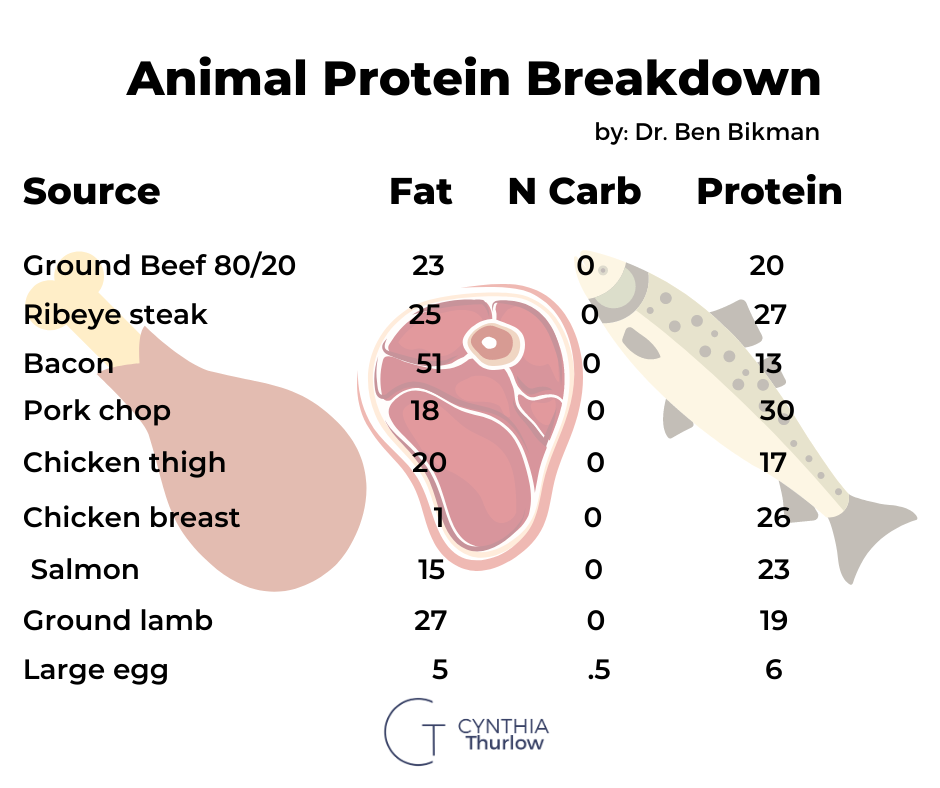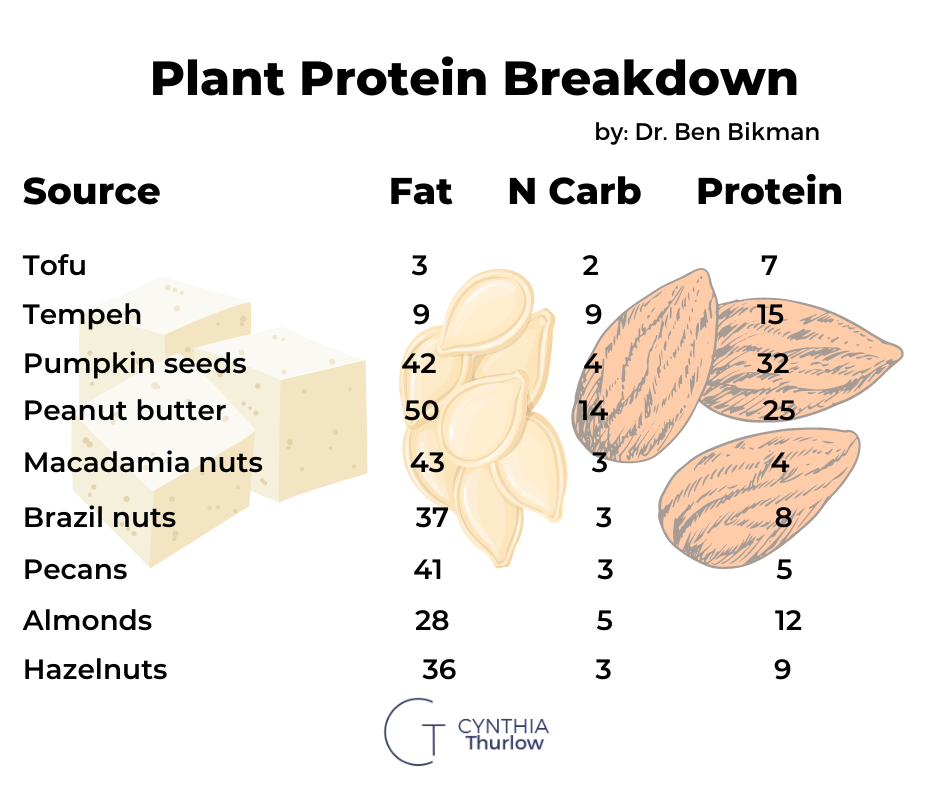How Much Protein Do I Really Need?
- September 7, 2020
- No Responses

Protein consumption can get very confusing. Protein can get a lot of hype and it can also be the detriment to a quality diet. So, what are the facts?
The hard and fast truth is that protein in the Standard American Diet is lacking. Contrary to popular belief, most Americans, especially American women, are not consuming enough for an ideal BMI or for the needs of their own skeletal muscles. Protein helps build and maintain muscle functionality in our bodies. It’s critical we take care of our muscles, as it is the largest site for glucose disposal, fatty acid oxidation, and cholesterol. Additionally, there are 9 amino acids that we must consume as they can not be synthesized by our body. These 9 amino acids are termed as “essential” for this exact reason. We need amino acids to function in the building blocks of our cells. Consuming enough protein is about so much more than just drinking a protein shake to fit in with the cool kids at the gym.
How Much Protein Do I Really Need?
The recommended ratio for protein consumption is 1:1 for grams/pound of your ideal body weight. If a healthy weight for your height and stature is 150lbs then your goal should be 150g of protein. Please do not get overwhelmed by this number. While it might require some adjustments to your diet, it is not impossible. Matter of fact, it might be easier than you imagine. Below we are going to break down multiple sources of protein and which is best for you.
Animal protein:
My preference for you is to consume animal protein that you have to physically chew. Chewing is a signal to your brain that you are eating, and I am making this distinction because the protein shake movement is such a strong one. I eat organic grass-fed/finished meat as much as I can and recommend my clients do the same. Sources of protein that are common in my house are beef, bison, chicken, shrimp, and eggs. We additionally try different meats as well like fish, lamb and seafood. I love finding a good local butcher or ordering from a reputable company like Butcher Box. My household has been ordering from Blackwing and we are very happy with the service.
Another reason I recommend animal protein: while all kinds of protein are beneficial, high-quality animal protein has the highest amino acid profile. As mentioned previously, amino acids support the growth and repair of muscles, hormones, enzymes, and antibodies. Aim for a variety of grass-fed, organic, pasture-raised animal protein. If you are concerned about cost, purchase foods you are able to afford and that fit your budget. Aldi’s, Costco and Trader Joe’s often have organic animal protein at affordable prices. I live by the mantra GOOD, BETTER, BEST. If what you can afford falls in the “good” category, that is fine too.
Below we have a graphic that you can use to determine which animal protein is best for your nutritional needs.
Numbers are based on a 4 ounce serving size
Plant based protein:
For my vegan and vegetarian friends there are a variety of plant-based proteins available. You may need to supplement with other critical micronutrients. I also incorporate seeds and nuts into my diet and believe seeds to play a great supporting role in a complete nutritional diet. You can watch me talk about seed cycling HERE.
Numbers are based on a 2 ounce serving size.
Something that I want you to pay close attention to, as you look at both of these protein graphics, the quantity of food you would need to consume on a plant-based diet to reach your protein needs. The caloric load is significantly higher. This is not a debate, these are the scientific facts. The quality of protein is different in plants vs animals. Yes, you can achieve all of the amino acids needed from plants but it is not the same quality. If you are passionate about consuming a plant-based diet, please be mindful of your caloric and nutrition needs. I typically see others consuming far too many empty carbohydrates and no where near enough protein.
Additionally, I want to talk about soy. Soy is popular on a vegan/vegetarian diet as a plant-based protein option. One thing of note is that soy bean plants are largely genetically modified. We know long term exposure to GMO’s to be detrimental to our health. Some examples of soy: tofu is soy bean curd. Edamame is soy. Soy protein powders are added to many food products and vegan protein powders. If you are choosing to consume tofu, look for organic to minimize your consumption of GMO’s. Lastly, if you have a family history of estrogen influenced cancers, like breast cancer, you may want to avoid soy. Soy can mimic estrogen in the body. There is some debate around this topic, please do your own research. For further reading, you can visit this article HERE put together by Dr. Axe.
Protein in products:
The food industry is a multi-billion dollar industry that knows how to catch on to trends. Once dieticians and nutritionists gained notoriety for telling their clients to eat more protein, companies started adding protein to all kinds of foods. Here is the part that you need to pay attention to: not all protein is created equal and adding 10g of soy protein to a cereal bar did not transform it to a health food. Your food should expire. Your protein sources shouldn’t have a shelf-life of two years. Please do not be fooled by products touting the protein claim.
Additionally, ask yourself, how clean are the protein products that you are consuming? I found an article published by Consumer Reports sharing the findings of known toxins in various powders and drinks. Within the article and research performed by the Clean Label Project, “products made from sources of plant protein such as soy or hemp fared worse than those made from whey (milk) or egg, containing on average twice as much lead and measurably higher amounts of other contaminants.” The article goes on to say: “Also important: Buying a product with an “organic” label did not reduce the chances of getting a contaminated product. In fact, organic protein supplements had higher levels of heavy metals, on average, than nonorganic.” Wow. These findings are definitely contrary to what the manufacturers would like us to believe. If you would like to read more, you can read the complete article HERE.
Sarcopenia:
We want to prioritize protein for the long haul because of Sarcopenia. Sarcopenia is a natural part of the aging process and it is defined as the loss of skeletal muscle tissue. To help prevent or slow the loss of skeletal muscle tissue protein consumption is essential as a priority. Let’s be clear, the consumption isn’t really about the protein, it is about the amino acids that come from the protein. Your body needs them to carry out cellular function for muscle tissue. To learn more about Sarcopenia and the effect of muscle loss and aging, I am going to refer you to my friend and colleague, Dr. Gabrielle Lyon. I respect her work and was honored to have her on the Everyday Wellness Podcast. You can listen to her interview with myself, HERE. She is an advocate for muscle centric medicine and helping us age in the best way possible.
Final thoughts:
While it is largely common knowledge that protein is one of the three major macronutrients, I hope you have gained greater perspective on this macro. And my guess is, if you have ever hired a personal trainer at any point in your life, you have tracked your protein consumption. After reading this, you have learned more about protein and how it can make a greater impact in your overall health. When you start to eat any meal I urge you to consume protein first, a healthy fat second, followed by vegetables/carbs. We need those amino acids to keep us strong and healthy for the long term.
What was your greatest takeaway from this blog post? I would love to hear from you.





